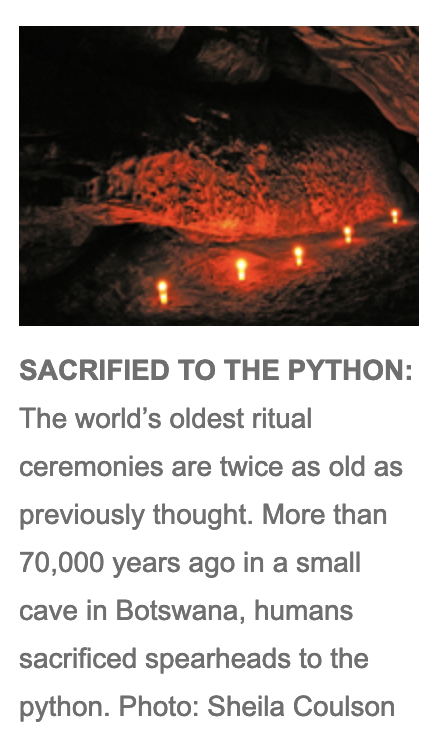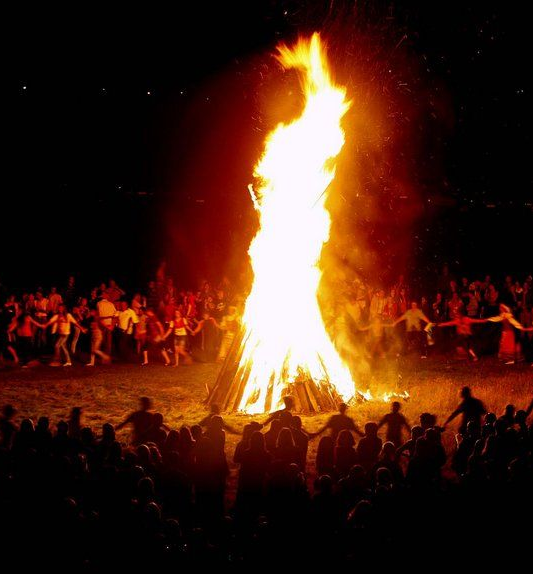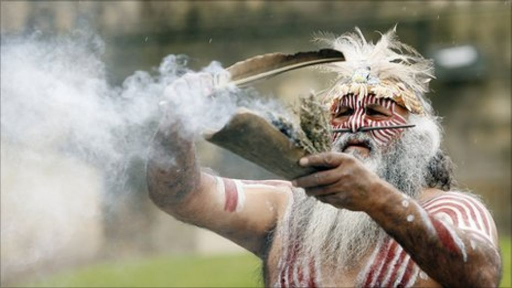by Paul Robear
In understanding the ritual process that surrounds the practice of Ecstatic Trance Postures, we take a deeper look at the individual steps and its implications. But let’s first put the idea of ritual into context first.
 The act of ritual is a common thread that has linked humanity throughout the ages, across ethnicity, culture and religion. The oldest known acts of human ritual date back 70,000 years to a cave in the Tsodilo Hills, Botswana, known locally as the “Mountains of the Gods”.
The act of ritual is a common thread that has linked humanity throughout the ages, across ethnicity, culture and religion. The oldest known acts of human ritual date back 70,000 years to a cave in the Tsodilo Hills, Botswana, known locally as the “Mountains of the Gods”.Our ancient ancestors used the bond of ritual to create ties of kinship, kinship among the members of the tribe, and kinship to Mother Earth.
We see ritual as a means to “set the stage” for transitioning into the alternate reality. Dr.Goodman looked at traditional societies around the world and for the commonalities of ritual. Let’s look at purification as a preparatory step.
Purification.
To properly orient ourselves in preparation for the Ecstatic Experience we introduce fire and smoke. Traditional at our institute we use the custom appropriate to our cultural surroundings… we burn a few leaves of sage. Burning sage — also known as smudging — is an ancient spiritual ritual for cleansing and used to achieve a healing state as well. Smudging has been well established as a Native American cultural or tribal practice in the southwest of the US and many other cultures around the world share similar rituals. Smudging is a way to energetically cleanse ourselves and our space to invite positive energy.
Purification.
To properly orient ourselves in preparation for the Ecstatic Experience we introduce fire and smoke. Traditional at our institute we use the custom appropriate to our cultural surroundings… we burn a few leaves of sage. Burning sage — also known as smudging — is an ancient spiritual ritual for cleansing and used to achieve a healing state as well. Smudging has been well established as a Native American cultural or tribal practice in the southwest of the US and many other cultures around the world share similar rituals. Smudging is a way to energetically cleanse ourselves and our space to invite positive energy.
 Fire. We also see similar use of fire. Fire can be used to enhance our ritual practice to help purify and set intentions in our life. Fire rituals are seen in ancient ceremonies handed down through the ages, in all cultures. It is a means to transform, to renew and to be reborn, to begin again. A fire ceremony is an invitation to be connected to a tradition of hundreds of thousands of years of ancestoral wisdom.
Fire. We also see similar use of fire. Fire can be used to enhance our ritual practice to help purify and set intentions in our life. Fire rituals are seen in ancient ceremonies handed down through the ages, in all cultures. It is a means to transform, to renew and to be reborn, to begin again. A fire ceremony is an invitation to be connected to a tradition of hundreds of thousands of years of ancestoral wisdom.Smoke. Another means of using fire and smudging is the use of smoke. Smoke offerings are found in native pipe ceremony, the smoking ceremony of the Aboriginal people of Australia, Buddhism, Indigenous practices in the U.S., and many other traditions. The smoke ceremony creates transformation and blesses a space and the inhabitants. The smoking ceremony fans the flame of connection to the spirit world.
Here are a few examples of fire ceremonies from around the world.
Vedic Tradition. traditional Vedic fire ceremony represent the most powerful presence of the Divine on Earth. The upward motion of fire’s smoke echoes the experience of rising divine kundalini energy up the spine.

Aboriginal Smoking Ceremony. The ceremony uses the fresh leaves of native plants to produce wet, steamy smoke. These aromatic plants, the most widely used is Eucalytus and the Emu Bush, for their powerful cleansing properties and distinct aroma. The healing smoke rises in a column towards the sky to keep unwanted spirits at bay, acknowledge ancestors, and pay respect to the land and sea.
Buddhist Fire Ceremony – Most Buddhist temples hold a fire ritual called goma taki every morning or afternoon in the main hall, open to guests. This involves burning wooden plates adorned with written prayers as the monks chant and recite prayers.
Aztec New Fire Ceremony. The New Fire Ceremony, also known as the Binding of the Years Ceremony, was a ritual held every 52 years in November, in celebration of the completion of a full cycle of the Aztec solar year.
For those looking for more scholarship on the relationship of fire and ritual, here are a couple of articles you may find interesting:
The Human Dimension of Fire Regimes on Earth
The Discovery of Fire by Humans:
